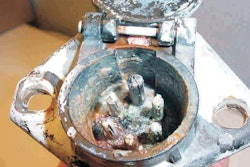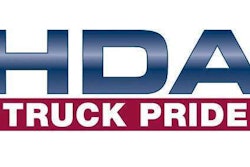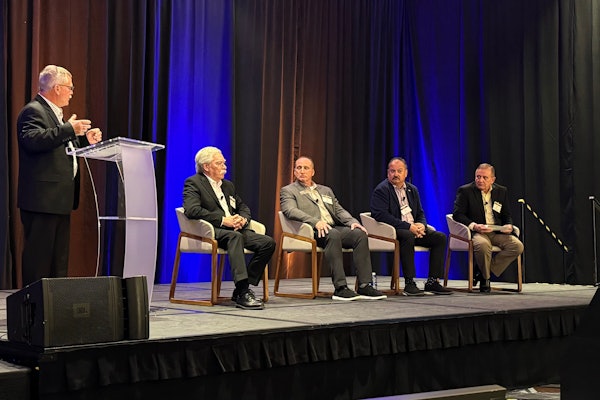The following comes from the March 2016 issue of Truck Parts & Service. To read a digital version of the magazine, please CLICK HERE.
Marketing is not an easy task for aftermarket distributors. When you carry hundreds of product lines and thousands of components there’s no easy way to promote all of them.
Fortunately for the independent aftermarket, this uphill battle does not have to be fought alone.
Supplier cooperative marketing programs provide distributors access to funds and marketing materials produced specifically to help them promote their vendors’ products in the aftermarket.
These programs are designed to lessen a distributor’s marketing load, and help both ends of the distribution channel target the end user. And because they are funded solely by vendors, there’s no reason every aftermarket distributor shouldn’t be using them.
Cooperative marketing helps distributors reach their customers, says Dan Bond, president at A-1 Truck Parts.
“It helps us get messages out,” he says. “And that helps, because I want to make sure we’re getting as many pieces of [promotional materials] in front of the guys that throw the box away as possible.”
Debbie Polok, president at Southwest Truck Parts, agrees.
“The money is there for you,” she says. “There’s no reason not to take advantage of it.”
Most aftermarket suppliers offer some form of cooperative marketing. Not every supplier names the program as such, but most make it point to allocate funds specifically for distributor-level marketing campaigns.
Hendrickson has offered a cooperative marketing program for distributors in place for decades, and uses prior year sales to determine how much marketing dollars each distributor can access during a given year, says Brian VanCamp, segment manager – Aftermarket.
Other distributors have similar programs.
Meritor distributors become eligible for cooperative marketing funds when they reach a specific dollar amount in yearly sales, says Craig Frohock, vice president, North American Aftermarket and Trailer.
Bendix also requires a sales threshold. Any full line Bendix distributors that meet the requirements has access to cooperative marketing funds, says Jerry Conroy, North American regional vice president – Aftermarket Sales.
“The funds are available for use on advertising and promotional programs that promote the local sale of Bendix products,” he says.
In each case, the suppliers say distributors are given a lot of flexibility on how they can use the funds. So long as a distributor can clearly show how they plan to promote a brand and its product lines, the suppliers say they’re almost always granted access to the funds.
Customers who propose cooperative marketing initiatives to Phillips Industries are free to get started as soon as the supplier signs off on the project, says Stephanie Schroeter, director of marketing.
She says the company’s customer base has found many productive and unique ways to put the money to work.
“Our customers are very creative in their use of the funds. They’ve used funding to print specialized literature or mini-catalogs. They use the funding to create incentives for their customers,” Schroeter says. “I am continually surprised by the inventive ways distributors can find to effectively use co-op funding.”
“We don’t limit their decisions. [Distributors] have a lot of options,” adds VanCamp. “The funds are there so they can market our brand and our product lines that they stock to their customers.”
Building such a connection is another valuable trait of cooperative marketing programs. One that benefits the suppliers and distributors alike. Establishing or strengthening the link between a supplier and distribution point ensures customers always exactly know where to go when they need a part.
“A coop marketing program is more than just coop marketing dollars. The most successful marketing programs come from a coop approach to the entire process working together to build programs to grow the business,” says Steve McEnany, vice president of Marketing and Technology at Midwest Wheel.
This is especially valuable with brand-loyal customers who appreciate premium products. “Our customers like to know we’re carrying the good stuff,” Polok says.
“It reassures them that when they buy from us, they are getting the best parts.”
These connections also can enhance a customer’s trust in their distributor, because they link the independent business to vendors who are true product experts, says Bruce Sommerville, vice president and chief operations officer at Drive Train Industries. And customers crave distributors who can help answer their questions, he says.
VanCamp says Hendrickson is very supportive of training events or promotional materials that offer product guidance for this very reason. “It allows us to use our expertise,” he says.
Another benefit to cooperative marketing that suppliers in particular enjoy is the ability to shape unique messages to specific sets of customers.
Nationwide advertising campaigns are broad by design, but speaking in generalities is not always the best way to promote a brand or product in a specific market. With cooperative marketing, suppliers can craft the perfect message for any end user group.
This can be done through promotional materials such as branded sales flyers or custom signage, as well as events where distributors work with suppliers to prominently feature a brand or product line.
“Our distributors know their trading areas far better than we do,” says Schroeter. “They respond quickly to opportunities and usually have an excellent sense of what types of programs and incentives will work.”
Synchronizing a distributor cooperative marketing effort with a vendor’s national marketing campaign can be profitable as well. Sommerville says Drive Train Industries likes to schedule sales and marketing efforts to mesh with vendor marketing campaigns so when customers come in contact with either message they are immediately drawn to the benefits.
“[Marketing] is about increasing your sales, your brand awareness and equity. The more touches and feels you can place that product in front of the customer the greater benefit that you have,” he says.
Bond follows the same formula when building his promotional schedule. He says he requests marketing calendars from his vendors at HDAW and takes them home and builds A-1’s plan around them. The strategy pays off wonderfully.
“It’s our biggest bang for our buck,” he says.
Cooperative marketing also might be the industry’s best method of promoting new products. It allows manufacturers a direct link to educate end users on its newest developments while clearly highlighting where a customer can go to get its newest part.
Co-op marketing is pull through marketing at its best, Frohock says.
“We want to keep the promotion of our products out there in the market at all times to support the long-term sustainability of our brand, and our [distributor] customers,” he says.
Bond has added television displays behind the counter at A-1 Truck Parts to show highlight products. Suppliers provide the videos, and Bond says he requests they use the opportunity to promote their newest innovations.
“Simple awareness can pay huge dividends,” he says.
Sharing resources is another benefit of cooperative marketing. Many suppliers have access to high-quality printing and marketing material that distributors could not or would choose not to purchase on their own. Suppliers often grant distributors access these services when producing content for a cooperative marketing effort.
“We have a lot of capabilities to produce art, graphics and promotional materials and get those out quickly,” says VanCamp.
Bendix does the same thing, Conroy says, allowing distributors access to its “AdBuilder tool or other options to create support flyers or brochures that promote Bendix products in the market.
Then there’s the goodies.
Cooperative marketing programs allow distributors to purchase merchandise that can be given away to customers as perks or prizes. Shirts, hats and office supplies are among the most popular products distributors choose to purchase with co-op marketing funds, suppliers say.
While these items don’t offer much opportunity in the way of the messaging, they can still be branded with distributor and supplier logos to link the two businesses.
Polok says she regularly receives customer requests for magnets, memo pads and other office supplies, and says each one she gives out is branded with logos of some of Southwest Truck Parts’ best vendors.
Vince Mathews does the same thing at Capitol Clutch & Brake.
“I think it helps a little bit,” says Mathews, president. “I think if they see [a logo] every day then when they need something they know exactly where they can get it.”
Sommerville says that example alone should be reason enough for any distributor not using cooperative marketing to look into it.
The goal for suppliers and distributors alike is to sell as much product as possible, and cooperative marketing programs exist so the former can help the latter do just that.
“The benefits are there. These [suppliers] do this for a reason,” Sommerville says. “The money has been earmarked for you. It is there to build your brand. If you don’t grab it and use it, it’s lost. I really don’t understand why anybody who had it available wouldn’t use it.”
Adds Conroy, “We value our relationship with our distributor partners. We are privileged to have mutually beneficial relationships where our products can provide our distribution channel partners with opportunities for sales growth and profitability … In doing this, Bendix benefits as well.”










